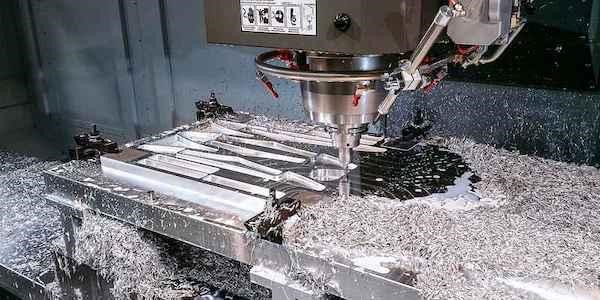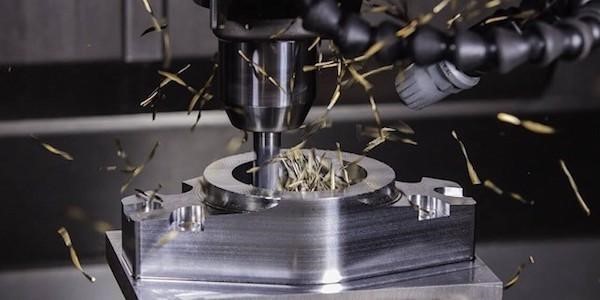In the rapid development of CNC technology today, parts design and processing more and more difficult, thin-walled parts is one of them. Lightweight, thin-walled, high-strength, corrosion-resistant thin-walled parts are several major advantages. However, these benefits also come with drawbacks such as poor rigidity and low strength. Under the influence of cutting forces and heat, thin-walled parts are prone to deformation, which affects their dimensional accuracy, positional accuracy, and surface roughness, making it challenging to meet design requirements. Therefore, selecting the correct machining process and tools is crucial when dealing with the difficulties encountered in machining thin-walled components.
Machining Process Selection
High-speed milling, which involves high cutting speeds and feed rates, is suitable for machining hard materials such as nickel-based alloys. Most CNC milled parts can complete roughing, semi-finishing, and finishing processes in a single setup. This one-pass approach is particularly beneficial for parts with complex curved surfaces and high surface quality requirements, significantly saving time and enhancing production efficiency. High-speed milling necessitates the use of machine tools with high rigidity and precision.
High-speed milling employs high spindle speeds and small cutting depths, resulting in lower cutting forces and minimal deformation, thus ensuring high machining accuracy. Additionally, the shallow cutting depths and fast feed rates of high-speed milling produce high-quality surface finishes that easily meet design requirements.
Machine and Tooling Requirements
High-speed milling demands specialized machine tools with high rigidity and precision. Similarly, the cutting tools must meet specific performance standards. Developing the machining process requires stringent planning and experienced machinists. Machine tool failures can lead to lengthy and costly repairs.
Given the part’s high precision requirements, low rigidity, and large machining allowances, deformation is a significant concern. To prevent chatter and deformation, high-speed milling is employed. This involves using high spindle speeds and power settings while adjusting the tool overhang to tune the natural frequency of the machine-tool system, avoiding the cutting vibration frequency. Milling deep cavities and sidewalls with greater axial depth of cut improves machining efficiency.
Tool Selection
Tool selection, as well as tool coating, material, structure are key factors affecting the cutting performance. Processing efficiency, processing quality and processing costs have a great impact. High-speed milling tools should not only have good wear resistance, heat resistance, impact resistance, should also have high mechanical properties, strength, toughness, oxidation resistance, while the economy and reliability should also be very good.
Each tool has the most suitable for it to process the material and the appropriate cutting speed, the same kind of tool material processing different materials, tool life often has a big gap
Currently in high-speed milling, carbide cutter is undoubtedly the current mainstream tool materials. Carbide coated cutter with excellent cutting performance and wear resistance, in the field of high-speed milling only occupy a dominant position. Considering the structure and process characteristics of thin-walled parts, the geometric structure parameters of the tool are also crucial. The optimum geometrical parameters of the tool are constantly changing as different tools machine different materials.
The shortcomings of thin-walled parts is poor rigidity, easy to deform, so the selection of tools, need to effectively reduce the cutting force and cutting heat, improve the stability of cutting and machining efficiency, to ensure that the machining accuracy and surface quality to a comprehensive consideration. Roughing when you choose a slightly larger diameter milling cutter roughing can be, in order to effectively improve the processing efficiency.
Cooling and Lubrication
The role of cutting fluid in milling is to reduce the temperature of the workpiece and tool, lubricate and cool the surface of the tool and the surface of the workpiece, so as to reduce the wear of the tool and the friction of the workpiece, improve the service life of the tool and the surface quality of the workpiece, and take away the accumulated chips on the cutting surface.
High-speed milling also requires scientific selection of cutting fluid. For example, aluminum alloy, the hardness of this material is not as high as steel, but the viscosity is high, the chip is easy to stick in the tool, thus increasing the wear of the tool, affecting the processing quality. Therefore, FIOR 808 synthetic cutting fluid is suitable.
Selection of the correct technology and cutting tools can effectively control the deformation of thin-walled parts to ensure that the parts of the precision requirements.

Conclusion
Effectively machining thin-walled parts using CNC technology presents unique challenges due to their inherent lack of rigidity and susceptibility to deformation. Despite their benefits, such as being lightweight, strong, and corrosion-resistant, thin-walled components require precise machining techniques to maintain dimensional and positional accuracy, as well as surface quality. The key to overcoming these challenges lies in selecting the right machining processes and tools, which can significantly mitigate issues related to cutting forces and thermal effects. Mastery of these techniques ensures that thin-walled parts meet stringent design requirements, highlighting the importance of expertise and careful planning in modern CNC machining.












































































